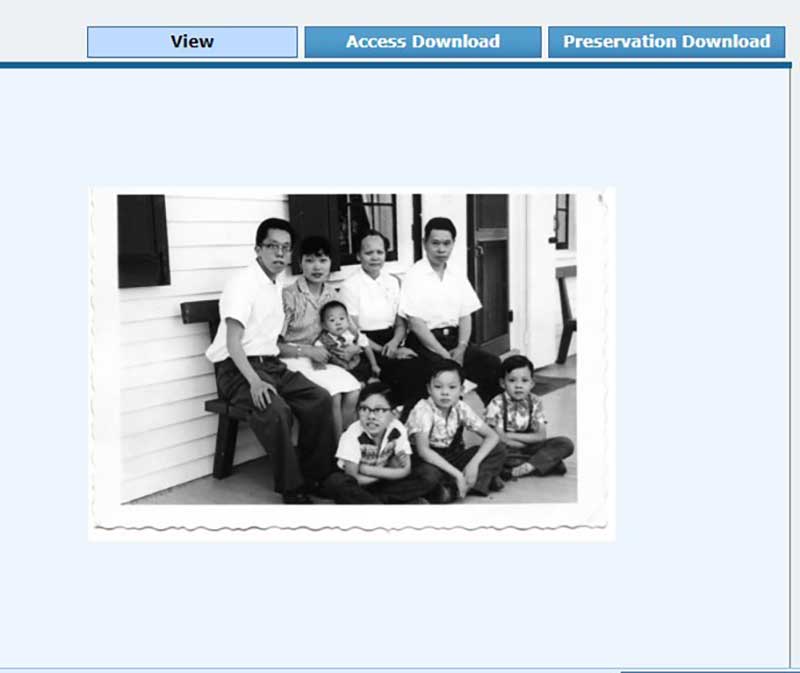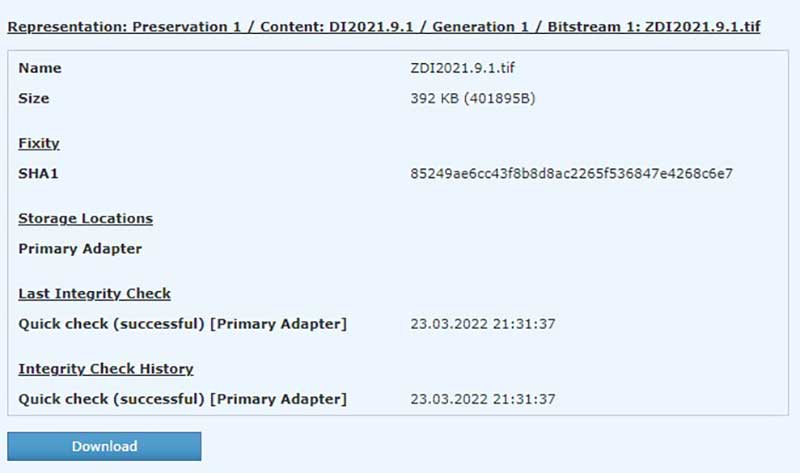Here in the Collections department, much of our work focuses on Digital Preservation. Digital Preservation is a way of keeping digital material alive so that they can be accessed long into the future, even as the technological tools and programs we use change. This involves the long-term care and management of the digital items comprising the majority of the Museum’s collection, such as images, stories, oral history videos and audio recordings. We are working to transfer these unique and irreplaceable items to our new Digital Preservation system, called Preservica. This will ensure that the Museum’s collection will continue to be actively managed in the present, while also remaining accessible for future generations. We have all experienced the frustration of a digital file becoming corrupt and the content being lost. Maybe you have had trouble finding a VHS player to watch an old movie or not being able to open an old application on your new laptop. Having a preservation system in place ensures that our digital collection remains healthy, as the files are always being checked for integrityi and usability.
While the digital preservation system does the work to monitor all the bits and bytes of digital content, there is still a lot of preparation needed to make sure the transfer works as expected, which still requires good old-fashioned human intervention. This has allowed us to take a deep dive into the digital collection. Here are a just a few of the ways we have been improving the collection while we prepare for the future:
Stories: We are preserving the original submission of each story, whether that be email, word document, or hand-written letter. While organising files for upload to the preservation system, we have been able to add extra useful information to the cataloguing record. We found some stories that needed to be transcribed, so we added the text to our catalogue to improve full-text searchingii. We have also been scanning some beautiful hand-written stories from the filing cabinets. This will ensure that these stories are preserved digitally, and extra cataloguing information improves the discovery of items through our Collection Search.
Oral Histories: Much like an archival document, the oral history is a primary source of information, which captures the interviewee’s lived experiences and memories. For that reason, we preserve the original camera files through to the final video available online. This maintains the provenanceiii, or the full history of the digital item. While organising folders of video and audio content for upload to the preservation system, we have also been able to find and match-up original camera files and metadataiv. Metadata includes a wealth of information about the camera recordings, including the date, time, size and quality of the files. This means we preserve a more complete picture of the oral history.
Images: Digital images comes in many different formats, and we usually save a high quality JPEG or TIFF as our preservation copyv, with a lower resolution JPEG as the access copyvi that you can view on the Image search page. This means we preserve the best quality version of the image internally, while online users do not need to wait for large files to download! Now that we have uploaded the majority of collection images to the digital preservation system, we can run reports to learn more about the content we take care of. We can see what types of formats we have, and how many. So far, we have uploaded almost 50,000 images in 12 different types of image formats, and Preservica will now monitor these formats to make sure they can still be opened and viewed 100 years from now!


Definitions
i Digital integrity means the file is accurate, unchanged, complete, and free of corruption.
ii A technique to provide access to electronic materials by indexing every word in every item.
iii Information regarding the origins, custody, and ownership of an item or collection.
iv A set of data that describes and gives information about other data.
v The version of a thing set aside to protect its informational content from harm, injury, decay, or destruction.
vi A digital object that has been scaled down from a high-quality original to a lower-quality, smaller version, to facilitate delivery over low-bandwidth networks.